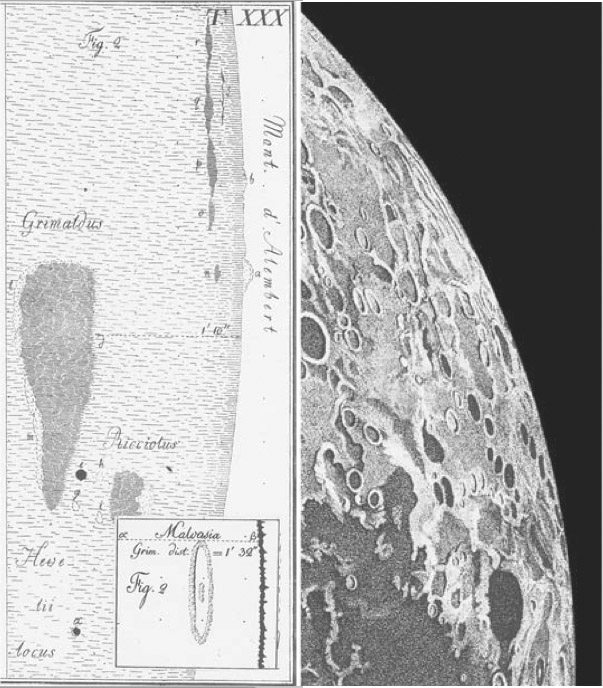
drawings from Richard Baum, Ewen A. Whitaker and the Journal of the British Astronomical Association
Mare Orientale is one of the scientifically most important landforms in the solar system for it clearly reveals the nature of multi-ring impact basins. Because it is centered just over the western limb its dark mare and fringing mountain arcs can only be seen well when good librations and lighting coincide. Its observationally ackward position has meant that its discovery and interpretation have been difficult. In the current issue of the Journal of the British Astronomical Association Richard Baum and Ewen Whitaker provide new information on the history of our understanding of this bulls-eye basin. They show that German observer Johan Schröter first noticed and named features associated with it in 1788 and later - the D’Alembert and Cordillera mountains and a series of dark splotches (left sketch). At about the same time one of the most gifted, but under-appreciated lunar observers, the English artist John Russell carefully depicted the dark patches and parts of what we now call the Rook and Cordillera mountains (right sketch). Although the American geologist Nathaniel Shaler recognized in 1872 that the curved mountain ranges indicated that a large crater existed beyond the Moon’s western limb, Mare Orientale was overlooked for most of the 1900th century. In the early 20th century the German cartographer Julius Franz gave the mare names Orientale, Veris, Aestatis and Autumni. Baum and Whitaker are remarkably circumspect in describing H.P. Wilkin’s “discovery” of what he called Mare X in 1937, and they generously do not discuss Patrick Moore’s claim (Patrick Moore on the Moon, p 72) to have discovered and named Mare Orientale. Their paper is a classic in lunar history and includes - especially in the notes - many almost forgotten tales of nomenclature and observers.
Related Links:
Rükl charts: 39 & 50
Who Discovered Orientale?
More on the discovery of Orientale
Yesterday's LPOD: An Unexpected Ray
Tomorrow's LPOD: Splotches and Mounds
COMMENTS?
Register, Log in, and join in the comments.



